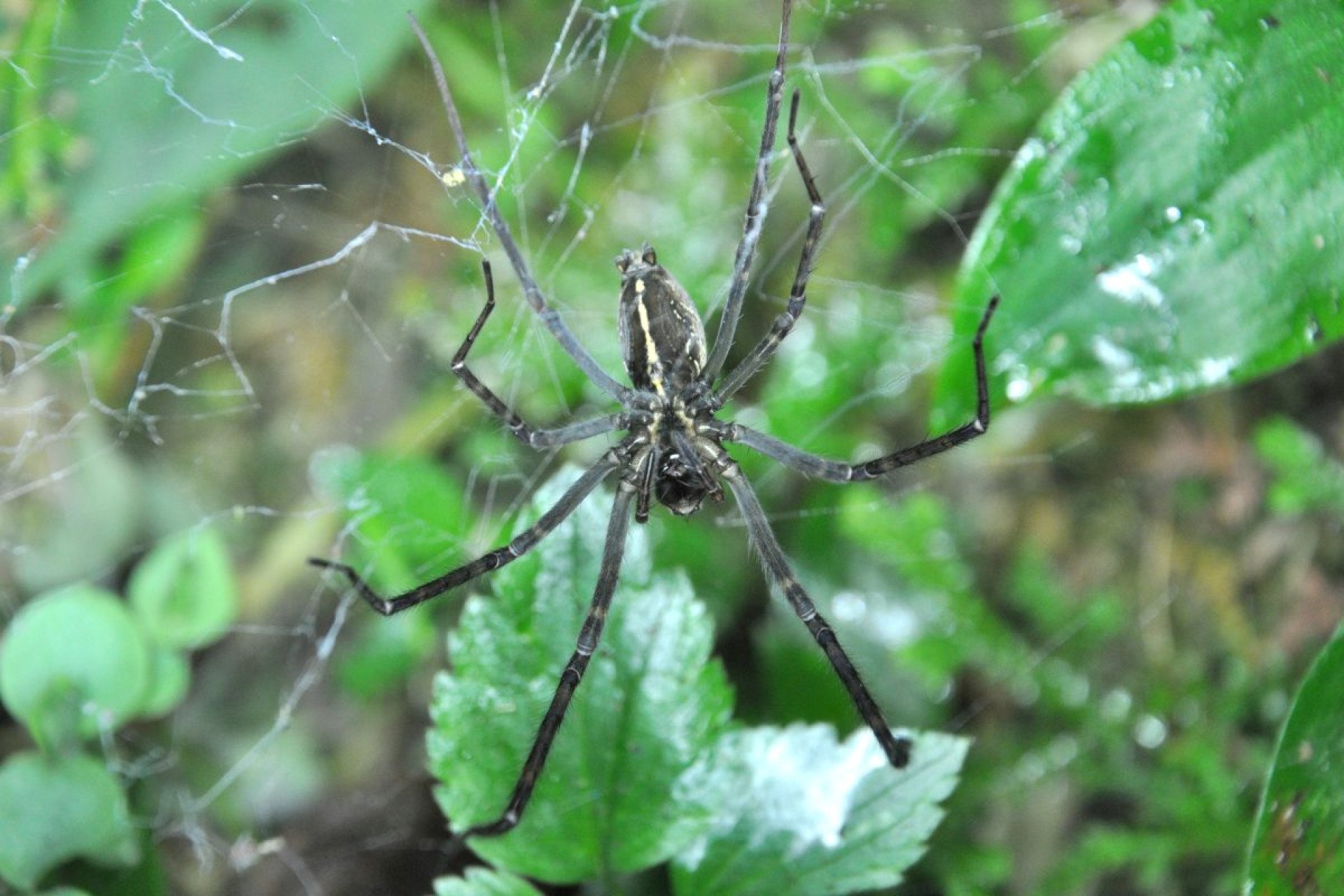Science
Spiders Utilize Fireflies’ Glow to Enhance Hunting Success

A recent study reveals that the sheetweb spider, known scientifically as Psechrus clavis, has developed an innovative hunting strategy by exploiting the luminous signals of fireflies. Published on August 27, 2023, in the Journal of Animal Ecology, this research highlights how these nocturnal predators use the captivating glow of fireflies to attract additional prey.
Researchers observed that these spiders demonstrated an unusual behavior: they would often leave captured fireflies suspended in their webs for extended periods, sometimes up to an hour. Unlike other insects, such as moths, which the spiders consumed immediately, the fireflies remained untouched. This prompted scientists to investigate the potential evolutionary advantages behind this behavior.
In a series of experiments, the research team, led by ecologist I-Min Tso from Tunghai University in Taiwan, discovered that the spiders effectively used artificial light sources resembling firefly luminescence. They placed LED lights on spider webs and found that these illuminated webs attracted three times more prey compared to those without any lights. When specifically targeting fireflies, the webs with LED lights attracted ten times more of the glowing insects, predominantly males, indicating that the fireflies mistook the artificial glow for potential mates.
I-Min Tso explained, “Handling prey in different ways suggests that the spider can use some kind of cue to distinguish between the prey species they capture and determine an appropriate response.” This insight points to the potential role of bioluminescent signals in helping spiders identify fireflies, allowing them to adjust their behavior accordingly.
Despite the intriguing findings, researchers acknowledged the challenges of conducting field experiments using real fireflies, which are often threatened species. Conducting such experiments would not only be difficult but could also raise ethical concerns regarding the impact on firefly populations.
The study offers a fascinating glimpse into the complex interactions between predators and prey, particularly in the darkness of night. “This study sheds new light on the ways that nocturnal sit-and-wait predators can rise to the challenges of attracting prey and provides a unique perspective on the complexity of predator-prey interactions,” noted Tso.
As the investigation into spider behavior continues, the implications of this research extend beyond mere curiosity. Understanding these unique predatory strategies could enhance our knowledge of ecological dynamics and the intricate relationships that exist within ecosystems. The findings serve as a reminder of the remarkable adaptations that species develop to survive and thrive in their environments.
-

 Technology5 months ago
Technology5 months agoDiscover the Top 10 Calorie Counting Apps of 2025
-

 Health3 months ago
Health3 months agoBella Hadid Shares Health Update After Treatment for Lyme Disease
-

 Health3 months ago
Health3 months agoErin Bates Shares Recovery Update Following Sepsis Complications
-

 Technology4 months ago
Technology4 months agoDiscover How to Reverse Image Search Using ChatGPT Effortlessly
-

 Technology1 month ago
Technology1 month agoDiscover 2025’s Top GPUs for Exceptional 4K Gaming Performance
-

 Technology2 months ago
Technology2 months agoElectric Moto Influencer Surronster Arrested in Tijuana
-

 Technology5 months ago
Technology5 months agoMeta Initiates $60B AI Data Center Expansion, Starting in Ohio
-

 Technology5 months ago
Technology5 months agoRecovering a Suspended TikTok Account: A Step-by-Step Guide
-

 Health4 months ago
Health4 months agoTested: Rab Firewall Mountain Jacket Survives Harsh Conditions
-

 Lifestyle5 months ago
Lifestyle5 months agoBelton Family Reunites After Daughter Survives Hill Country Floods
-

 Technology4 months ago
Technology4 months agoHarmonic Launches AI Chatbot App to Transform Mathematical Reasoning
-

 Technology3 months ago
Technology3 months agoUncovering the Top Five Most Challenging Motorcycles to Ride









